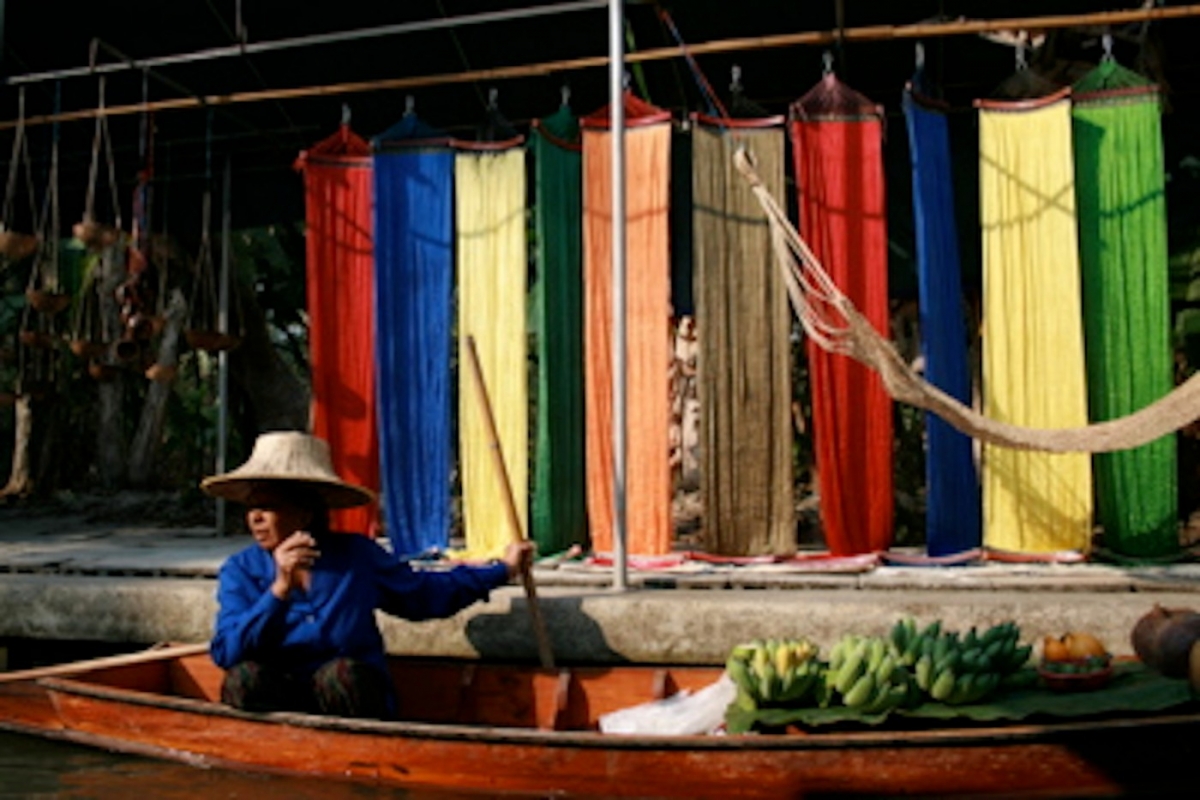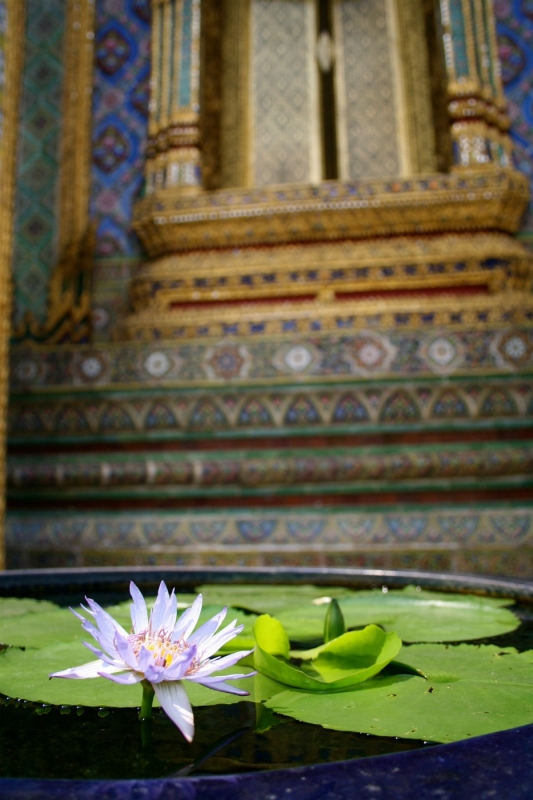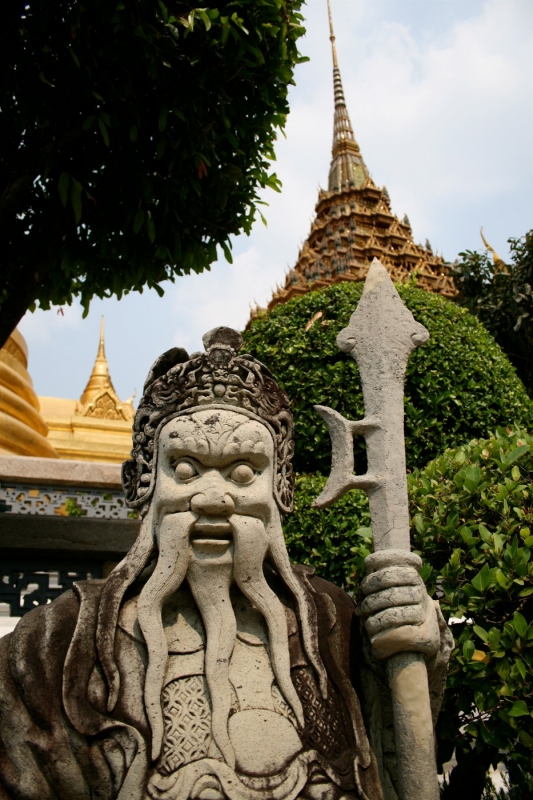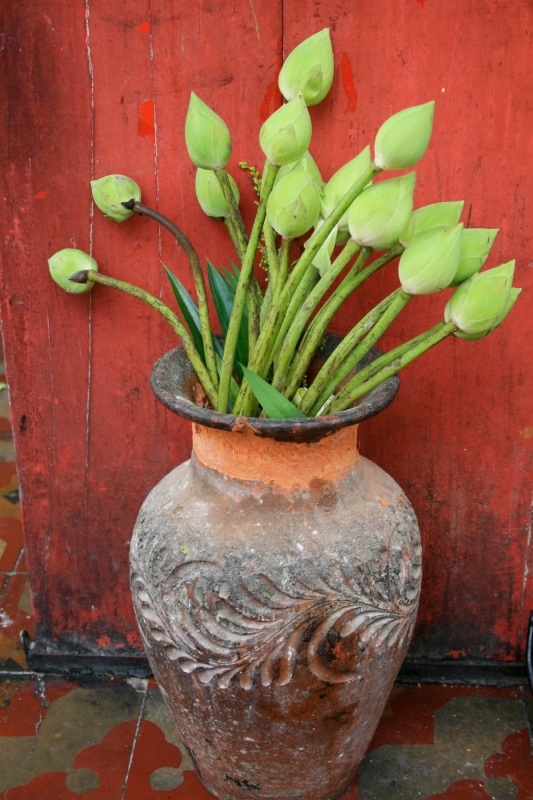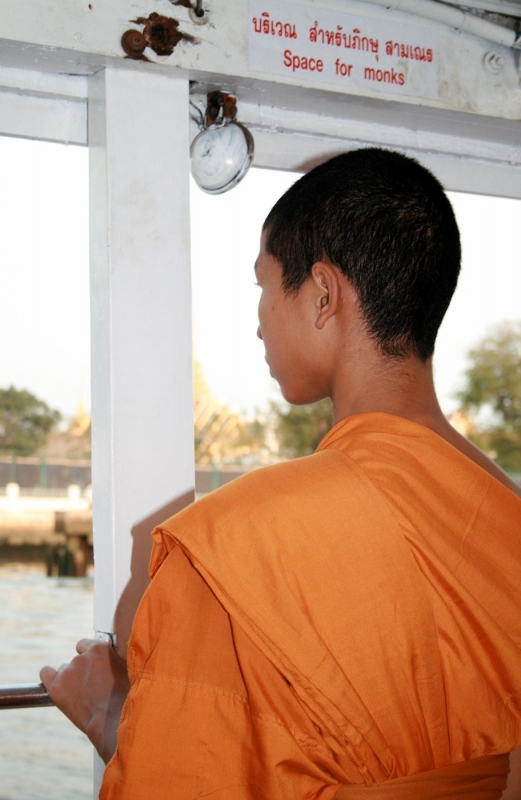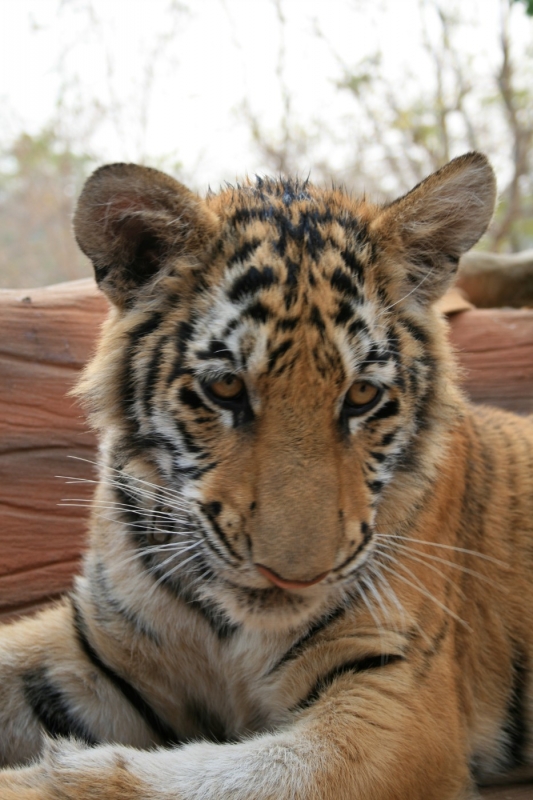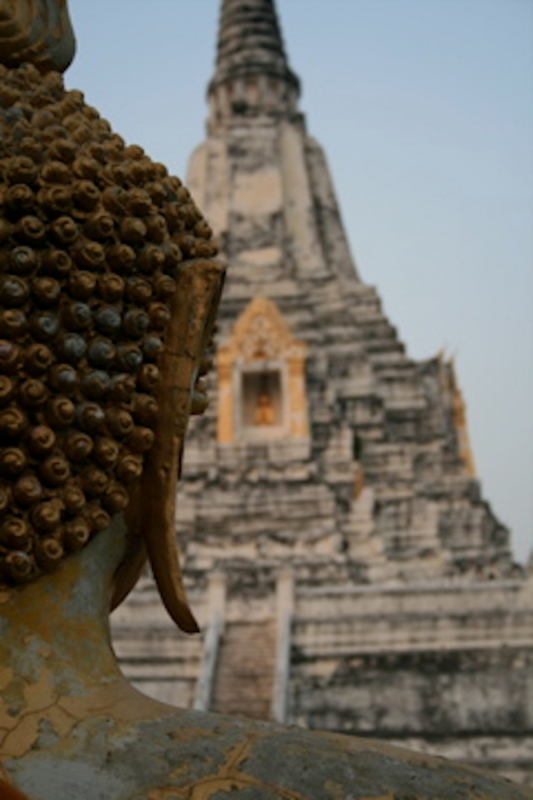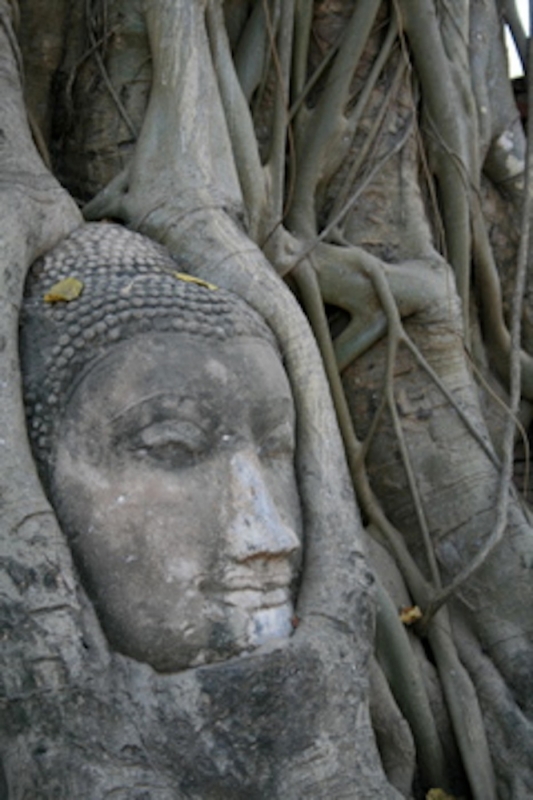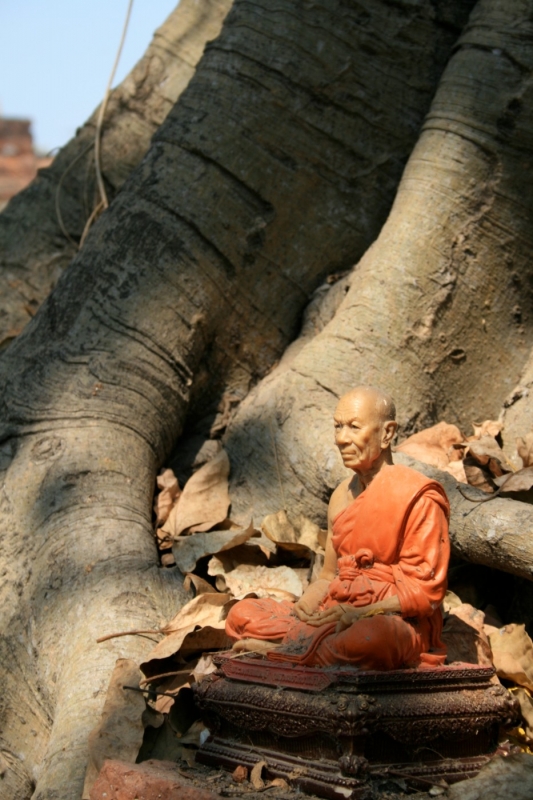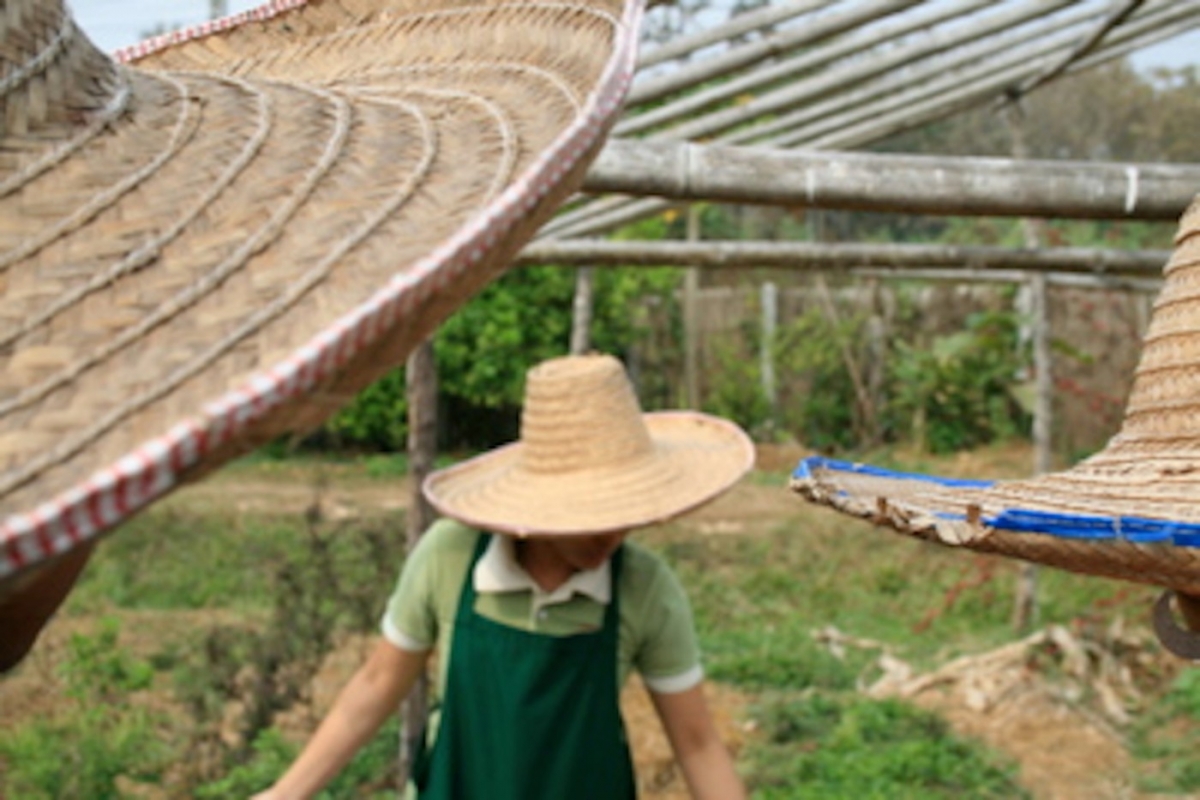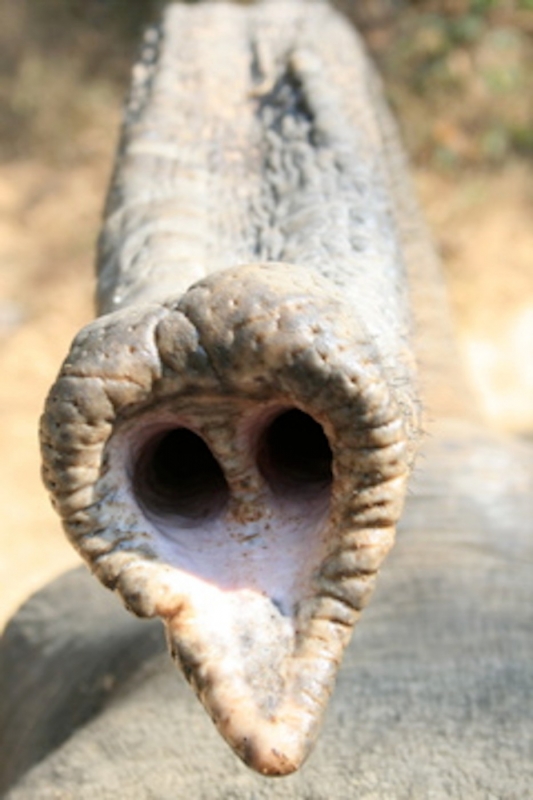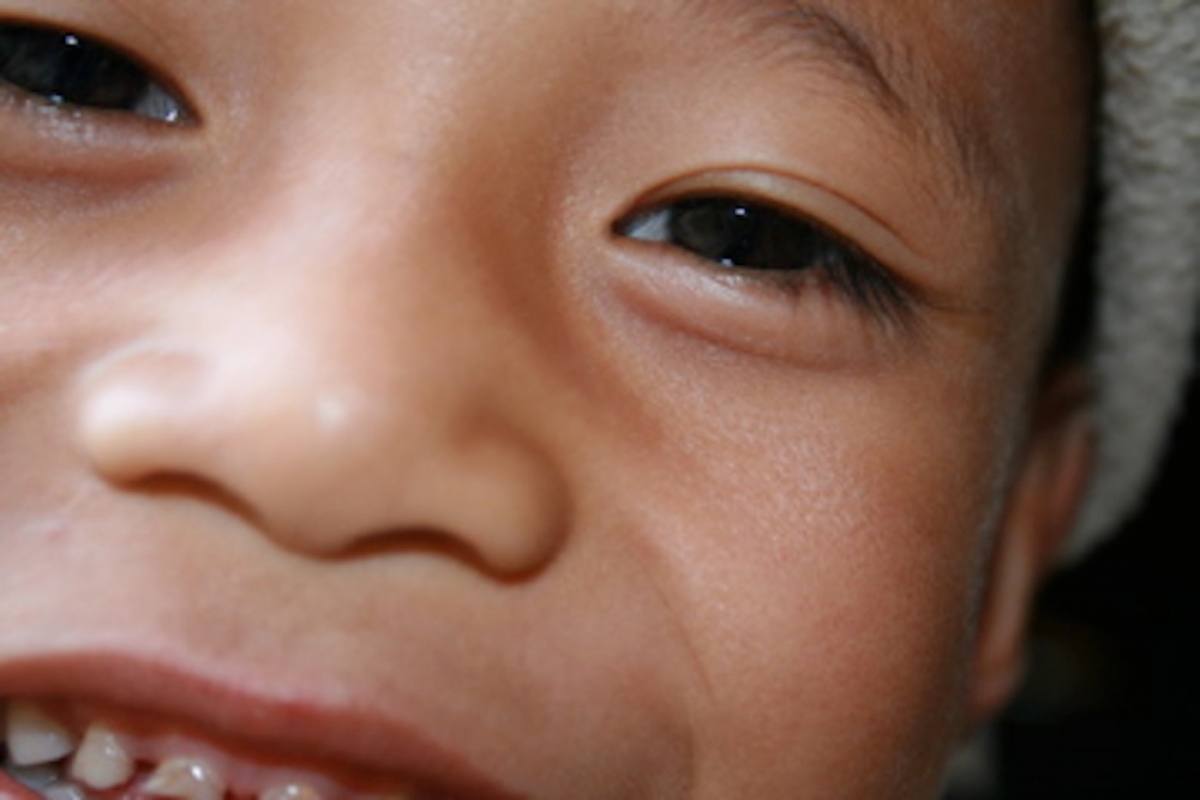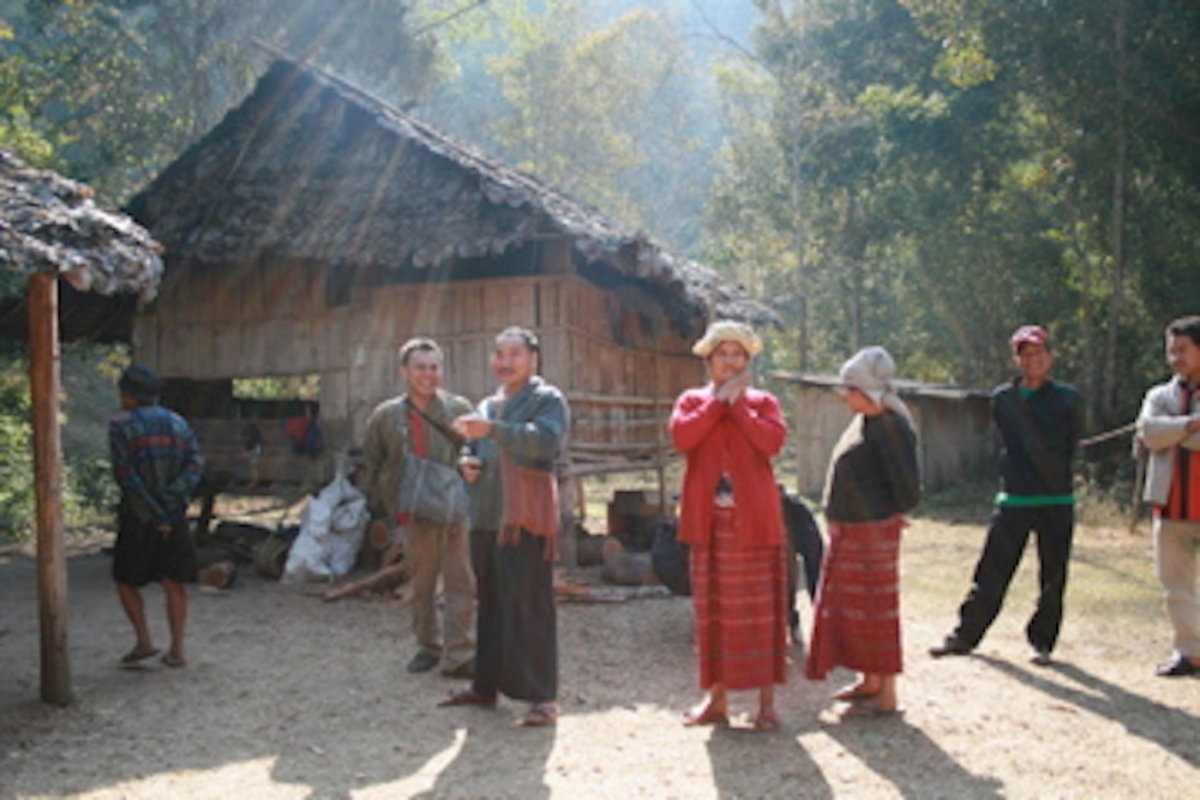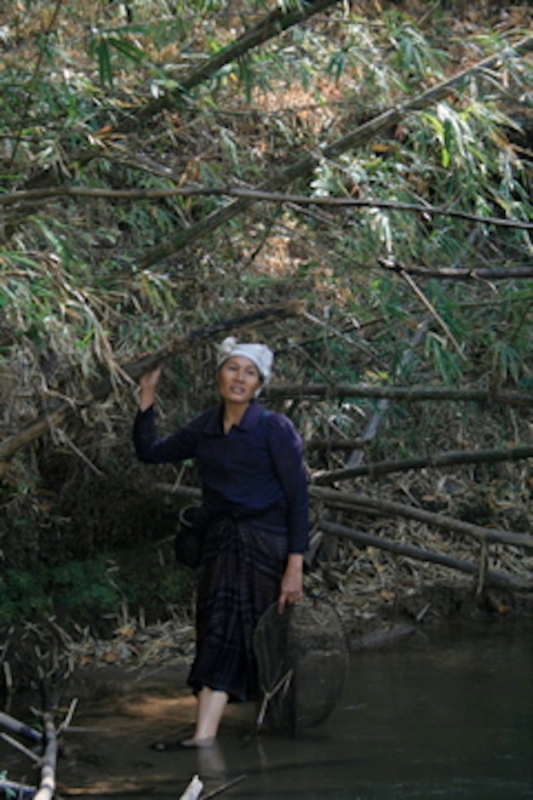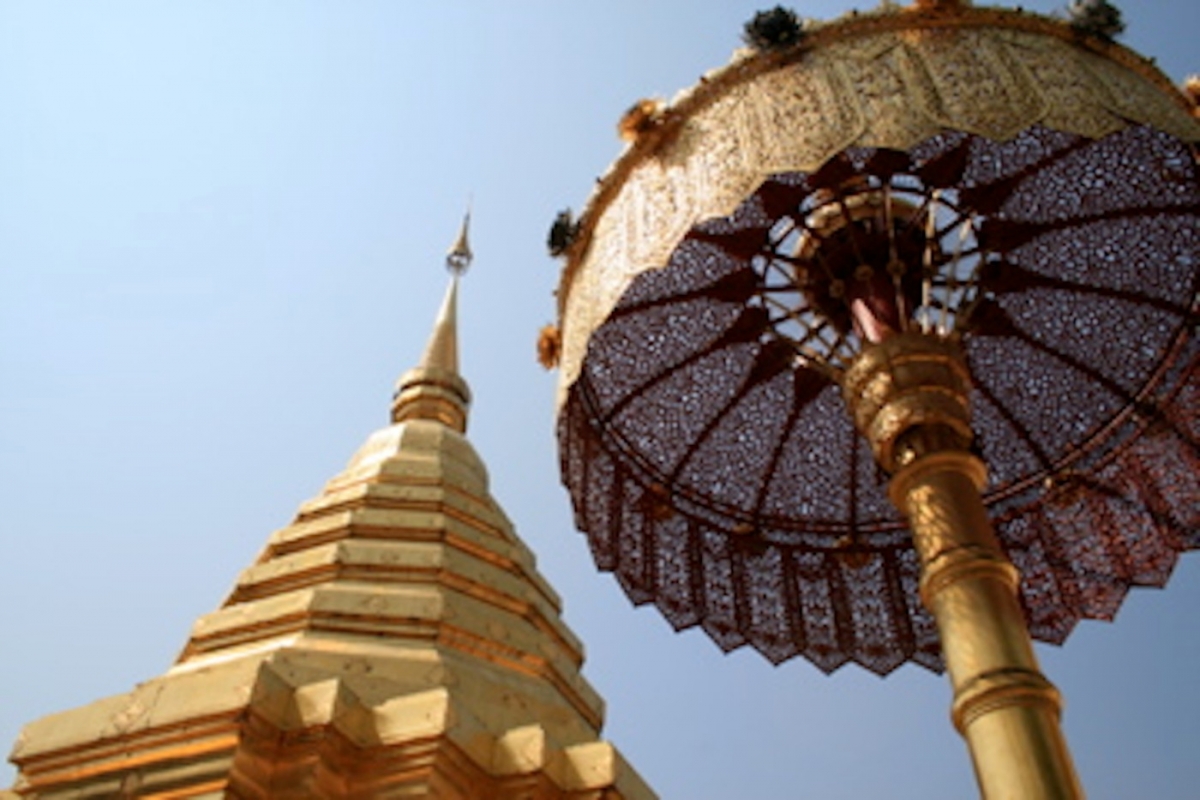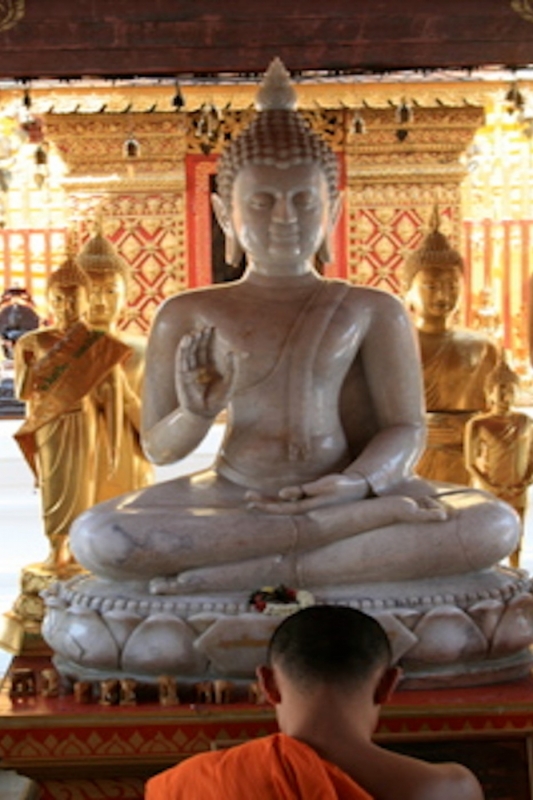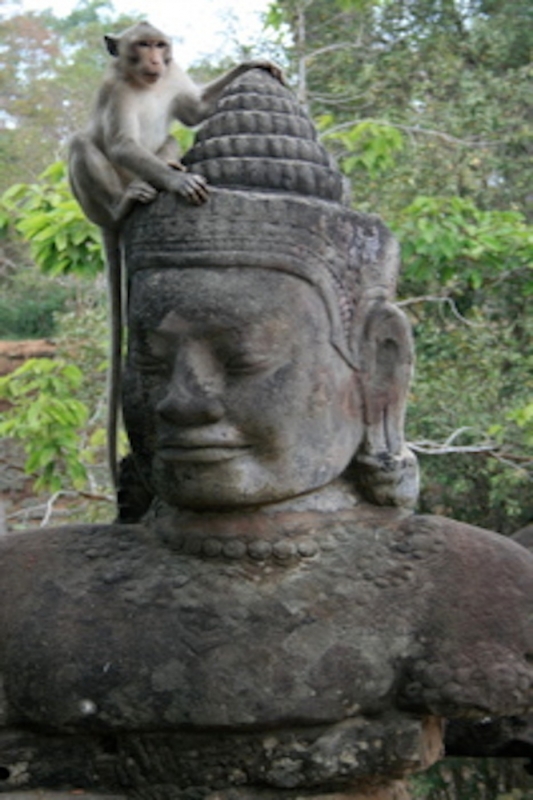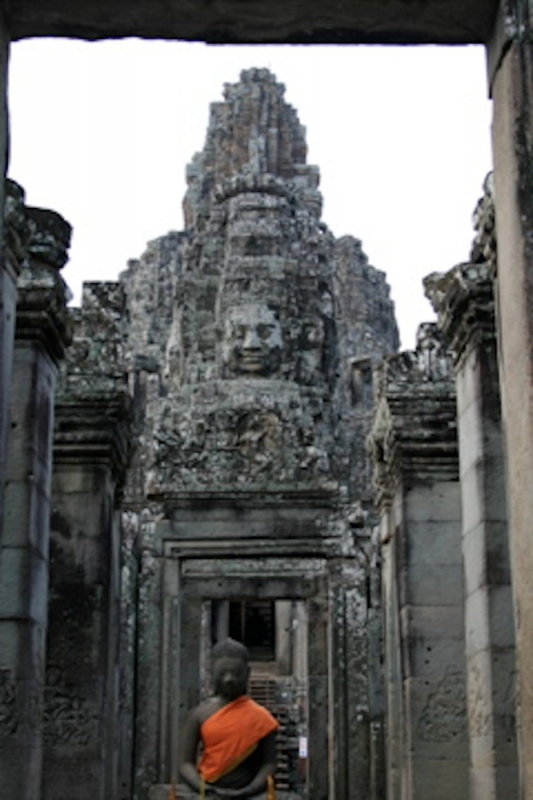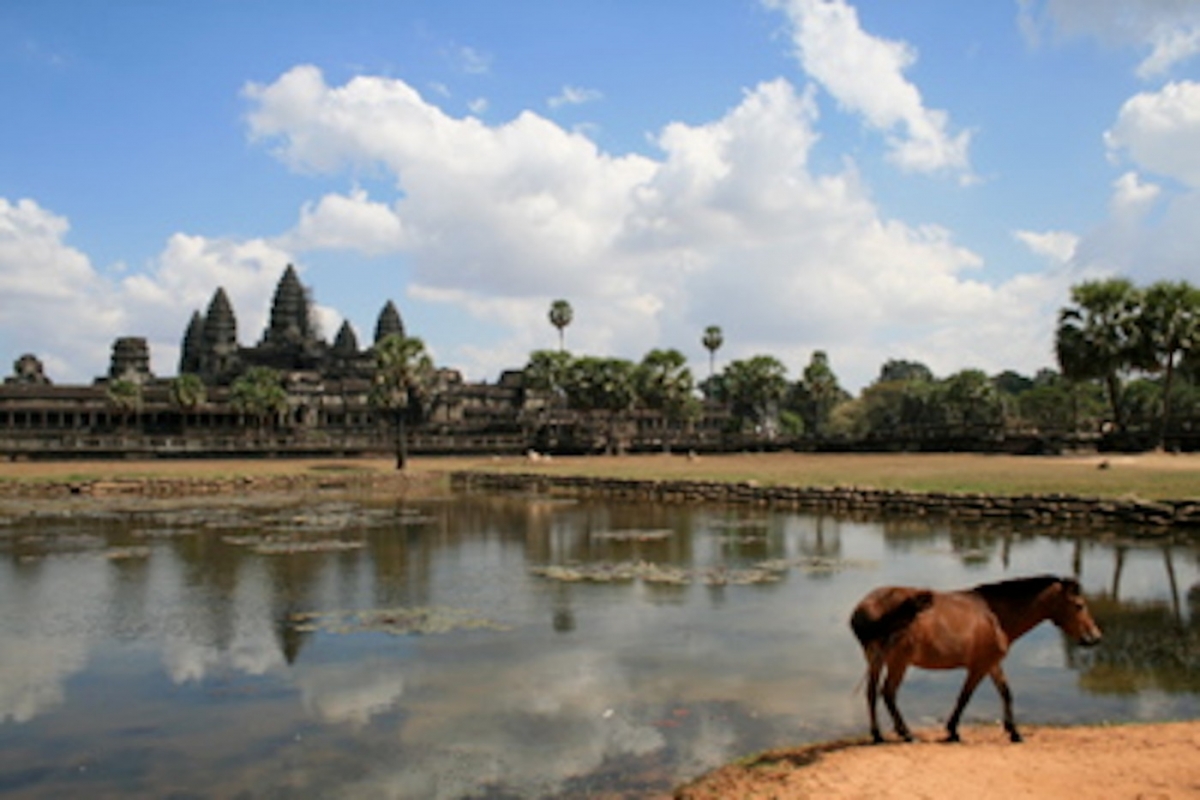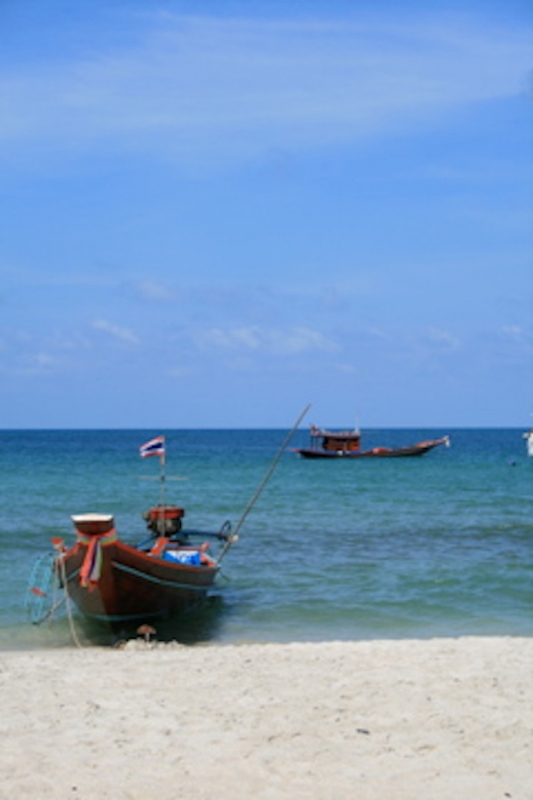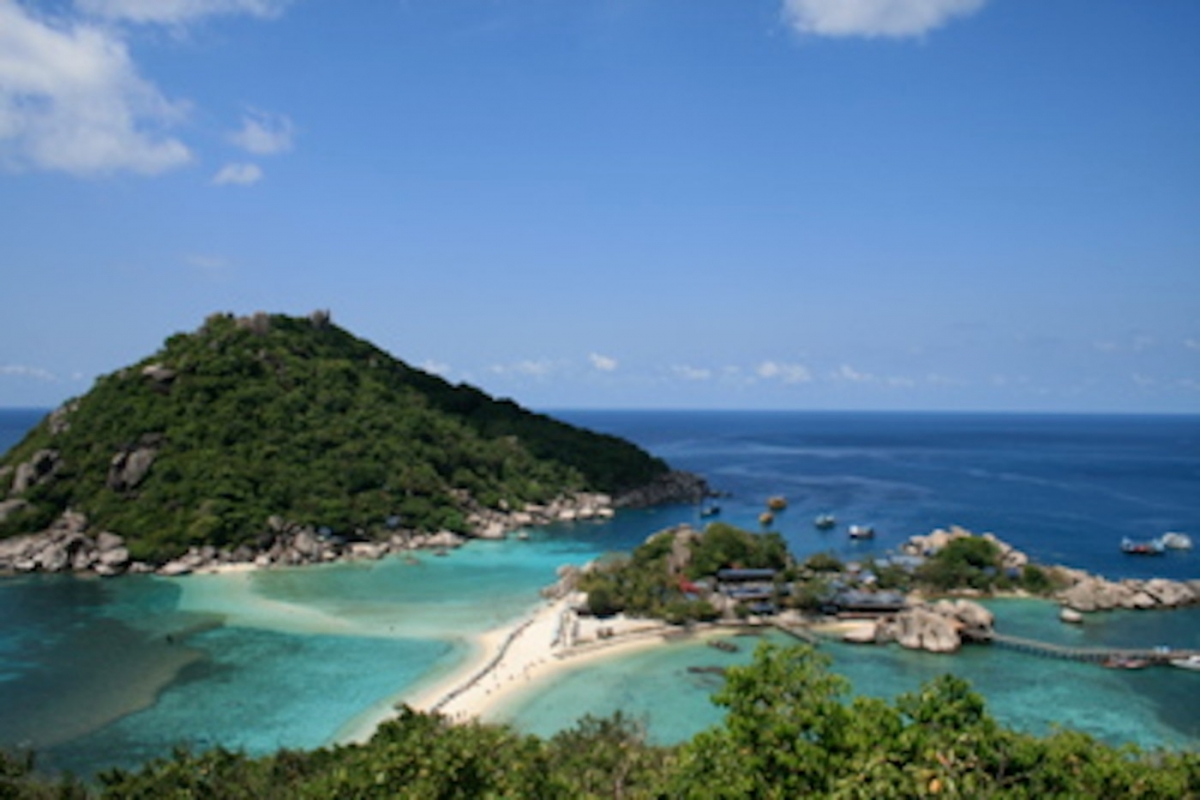∞ Originally published in the Vancouver Sun and the Winnipeg Free Press, June 14, 2009. ∞
It’s dawn and the mountain mists are shifting, mixing with my cold-cloud breaths as I huddle near the fire and clutch a cup of steaming tea in a bamboo-pole cup. Below me, down a steep hill, weak sunlight glints off the tin roofs of the bamboo-pole houses. A gibbon calls. Roosters crow.
I shiver and clasp a rough wool blanket tight over the sweater I haven’t taken off since I slipped into my sleeping bag and nine blankets the night before. Suddenly, the toques and cloth turbans I’ve seen on villagers make perfect sense.
Next to me a little boy of three in a snug red and blue hat and red woven smock plays with his cup, as his mother, laying out her weaving, looks on. His older playmates, wearing flip-flops with socks, jackets with broken zippers and crooked-tooth smiles giggle and take turns playing with my camera.
The Thailand encountered here, in the Doi Inthanon National Park highlands west of Chiang Mai, bears little resemblance to the tropical postcard paradise we’ve come to expect.
To most tourists, Thailand is best known for bustling Bangkok and stunning southern white-sand beaches. But in Thailand’s northern highlands, travellers will find an alternative to package-tour holidays with eco-tour treks into the hills to get a glimpse of life among the region’s traditional hill tribes.
The hill tribes are ethnic minority groups living in the rural highlands of Thailand, Laos, Myanmar and Vietnam. There are six major hill tribes in Thailand: the Karen, Akha, Lahu, Mien (Yao), Lisu and Hmong, almost all living in the hilly northern regions bounded by Myanmar and Laos.
According to some estimates there are as many as 400,000 Karen, 70,000 Akha, 150,000 Hmong, about 100,000 Lahu, 55,000 Lisu, and 30,000 Mien living in Thailand.
I’ve spent the night shivering under a mosquito net on the bamboo floor of a traditional house in the Karen village of Mae Tala Klang Kren, along with my Karen guide Dot and five other backpackers who have set out on an Eagle House tour to explore the nature and culture of Doi Inthanon park on a three-day adventure trek.
It proves a rustic and at times challenging way to explore nature in northern Thailand, but a rewarding one.
The trek begins with a juddering two-hour open-air sangathew truck ride from Chiang Mai that jolted us up the steep dirt mountain roads, their hairpin turns revealing spectacular views of the rice paddies of the park’s lower valleys.
Doi Inthanon park, often called “the roof of Thailand,” was created in 1954 and now covers more than 480 square kilometres — many of them vertical. The nature preserve is also home to area hill tribes, who have permission to farm the jungled slopes. The terrain varies from 800 to more than 2,500 metres above sea level and contains incredible diversity: more than 360 bird species alone. The park’s highest peak is Doi Inthanon at 2,565 metres, the highest spot in Thailand — our ears pop as we ascend into the thin air.
We encounter a very different kind of vertigo as we lurch and sway through the forest on the backs of elephants guided by mahouts at the Pong Youeng Elephant Camp. The gentle beasts are no use to us further in the mountains, as trails narrow to winding one-foot-wide ruts, so we leave them behind and begin a challenging three-hour hike. Sweating hard under the hot sun and the weight of our packs we scrabble with our hands up sheer rocks, inch across one-pole-wide bamboo bridges over rushing rivers, and try to avoid slipping on the jungle carpet of bamboo leaves to fall down the faces of cliffs.
The scenery is a welcome distraction from the danger. We pass clear jungle waterfalls, bubbling brooks, thick ropes of hanging vines, sheets of cascading purple bougainvillea, and valleys of harvested rice paddies. The only sound is our feet, the occasional call of a gibbon high in the tree canopy and the distant tinkle of cowbells from roaming herds.
When our energy flags, Dot calls to a farmer, who comes down from his terraced fields to offer a pail of tart strawberries, or he plucks passion fruit from under wild fruit trees and we slurp the sticky fruit out of the shells.
By evening, we reach the Karen village. Children, chickens, roosters, fat black pigs, dogs and cats run amok — the livestock bed down beneath the homes, which are raised on bamboo stilts.
We visit a hut where a man and his 80-year-old father watch the fire and steam sticky rice for their evening meal. Families drink weak tea from cast iron kettles. Women in long patterned skirts and traditional cloth hats carry babies on their backs, weave new straw roofs, run cloth on large looms, or wash and dry rice in large woven pans, throwing the chaff to the chickens.
We share smiles as we make our way through the village, and Dot greets friends and hands palm-sugar-sweetened rice snacks to kids who come to stare. We settle in for a hearth-cooked meal of fragrant cilantro and galangal-scented soups, steaming jasmine rice and chicken and vegetable stir fries, including greens from a garden we passed on the way and a chicken that was likely clucking in the village not long before.
The sounds of the village slowly set with the sun and eventually even the smoke plumes from the hearth fires blow out.
It’s an idyllic experience for the visitor, but the real lives of the Karen hill tribe people are anything but.
The Karen are the largest ethnic hill tribe in Thailand, with a population of about 300,000 to 400,000. It’s believed that the group originally came from Tibet, through China to Myanmar (Burma), where today they number more than seven million, and then into Northern Thailand, where the majority live west of Chiang Mai in the mountains and foothills.
Primarily subsistence farmers who practise slash-and-burn agriculture and cut rice paddies from the side of hills, the Karen also tend cattle and livestock and run cottage industries in weaving. Most adhere to Buddhist-animist beliefs and place great importance on honouring ancestors.
Due to repression in Myanmar, many Karen fled over the border into Thailand. Once here, these ethnic groups still face challenges and outright discrimination. Few hill tribes have their births registered. Most lack Thai citizenship and the identity cards that entitle them to government services.
Many live in deeper poverty relative to their Thai counterparts and as non-Thai speakers they are shut out of the country’s education system. The few hill-tribe schools that exist are substandard. Illiteracy is high. To survive, some hill tribe communities have resorted to growing drugs like marijuana and opium in the hills or trafficking over the borders. Sensitive, hill-tribe-operated or co-operative eco-tourism — and the employment and development opportunities it can provide when done right — can help create a source of legal revenue for hill tribes as they try to preserve their way of life.
Another long, cold night and day of jungle trekking later and we prepare for the last leg of our adventure — a white-water rafting trip down the Mae Cheam river.
We’re a little worse for wear after two days of camping and hiking, so the prospect of a bath in the crisp river doesn’t deter.
Until, of course, we see our boats: green-bamboo rafts, made the night before from stalks hacked from the forest and tied together with nothing more than bits of green straw. Our captain? A thin teen wearing flip-flops and wielding a long bamboo pole. We board nervously, then bend and duck as we try to keep our balance on the standing-room-only raft as it shoots down the river, running small rapids, crashing into rocks and routinely getting stuck. Only one trekker loses his balance and falls off. Luckily, there are no crocs.
Along the way, we float by Karen families and children fishing in the river, sifting the currents with circular nets, slipping small fish into woven pots worn on their backs. Boys slide under the water and turn over rocks to look for shellfish, women wash laundry. Bamboo fronds wave over the water, the sun flickers on the waves, the crisp water laps my feet, and children laugh and chase us from the banks.
All of a sudden, I feel like I could rough it here for at least another week. Who needs a beach when you can find a Thai paradise like this in the hills?
Elaine O’Connor tells travel tales at Whywanderlust.ca and on Twitter @WhyWanderlust.
If you go:
- Look for treks that are approved by Thailand’s official tourism office, the TAT, and that belong to the Northern Jungle Club. There are TAT outlets in all major cities, including Chiang Mai which has an outlet at 105/1 Chiang Mai – Lamphun Road.
- Most treks are based out of Chiang Mai, Chiang Rai, Pai and Mae Hong Song. In Chiang Rai, excellent eco-tour options that directly benefit or are run by hill tribes are offered by NGOs like the Hill Area and Community Development Foundation and the Mirror Art Group
- Eagle House runs a TAT-approved eco-trekking outfit that is also a member of the Northern Jungle Club. Their Doi Inthanon treks are run in an area exclusive to them — you won’t see other tourists. A portion of fees go to hill tribe projects to improve water supplies, put in bathrooms in village schools and build houses.
- No clue what to pack? Good trekking outfits provide you with a day pack, sleeping bag and packing list. On the list? A T-shirt, shorts, pants, towel, socks, long- sleeve shirt, water sandals and hiking shoes, swimsuit, bug repellent, sunscreen, hat and flashlight. Don’t forget warm socks, a sweater, even a toque — nights get extremely chilly.
- To learn more visit Tourism Thailand.

I’m a different kind of travel writer. I craft long-form, cover-worthy feature-length travel articles with style and substance. I tell travellers not just what to do, but why. Find out how to work with me.


